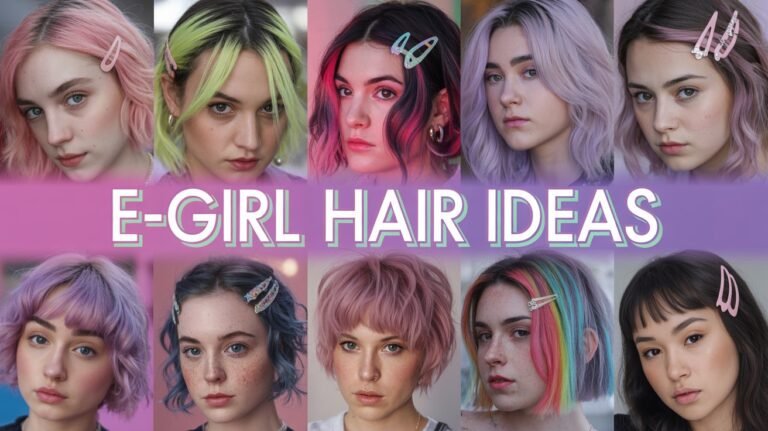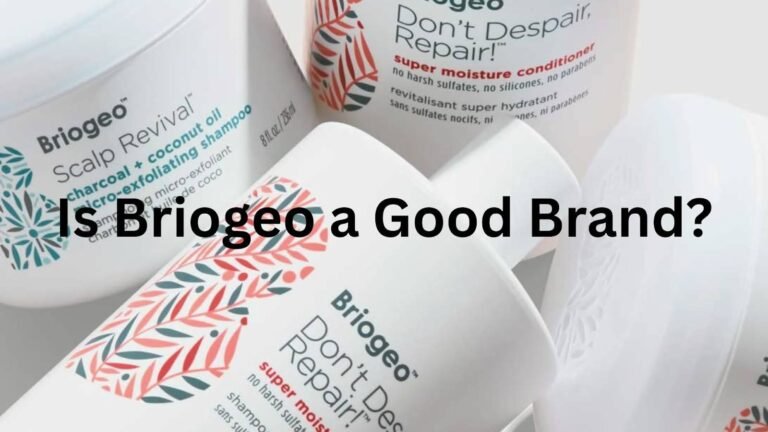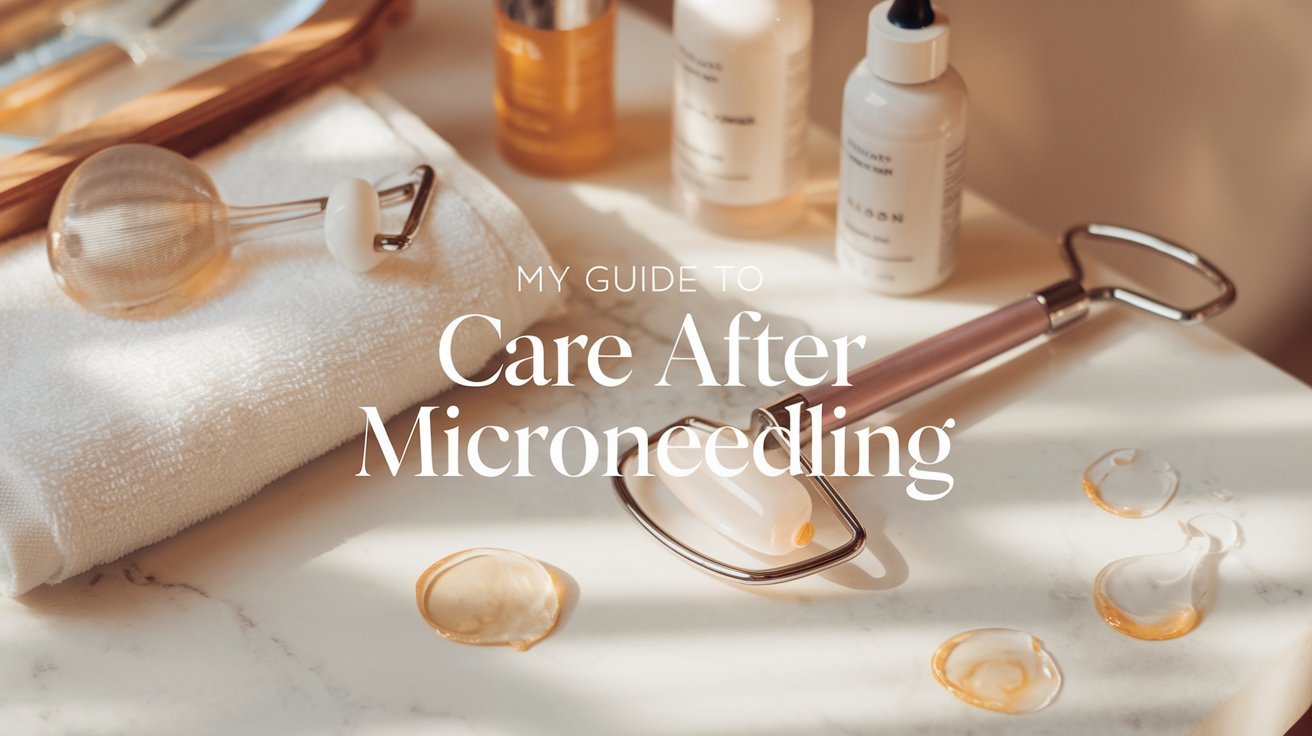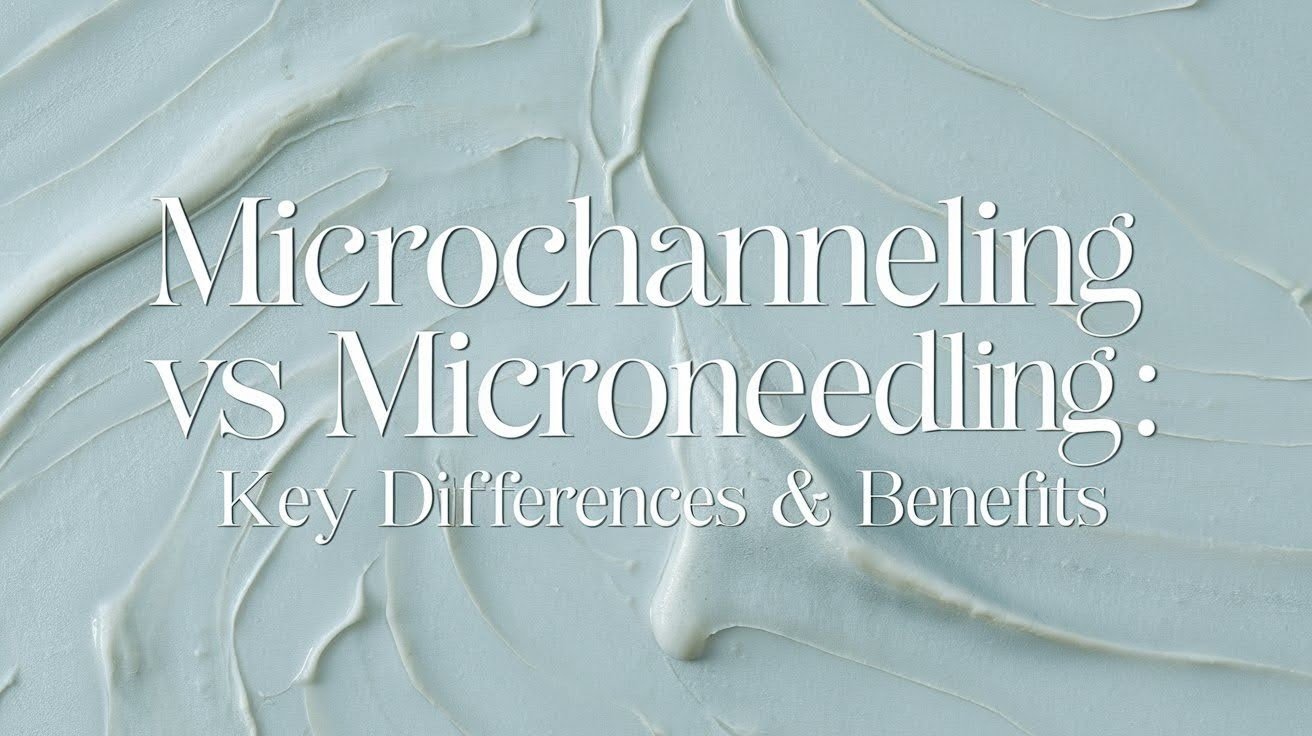Is Sodium Chloride Bad for Hair?
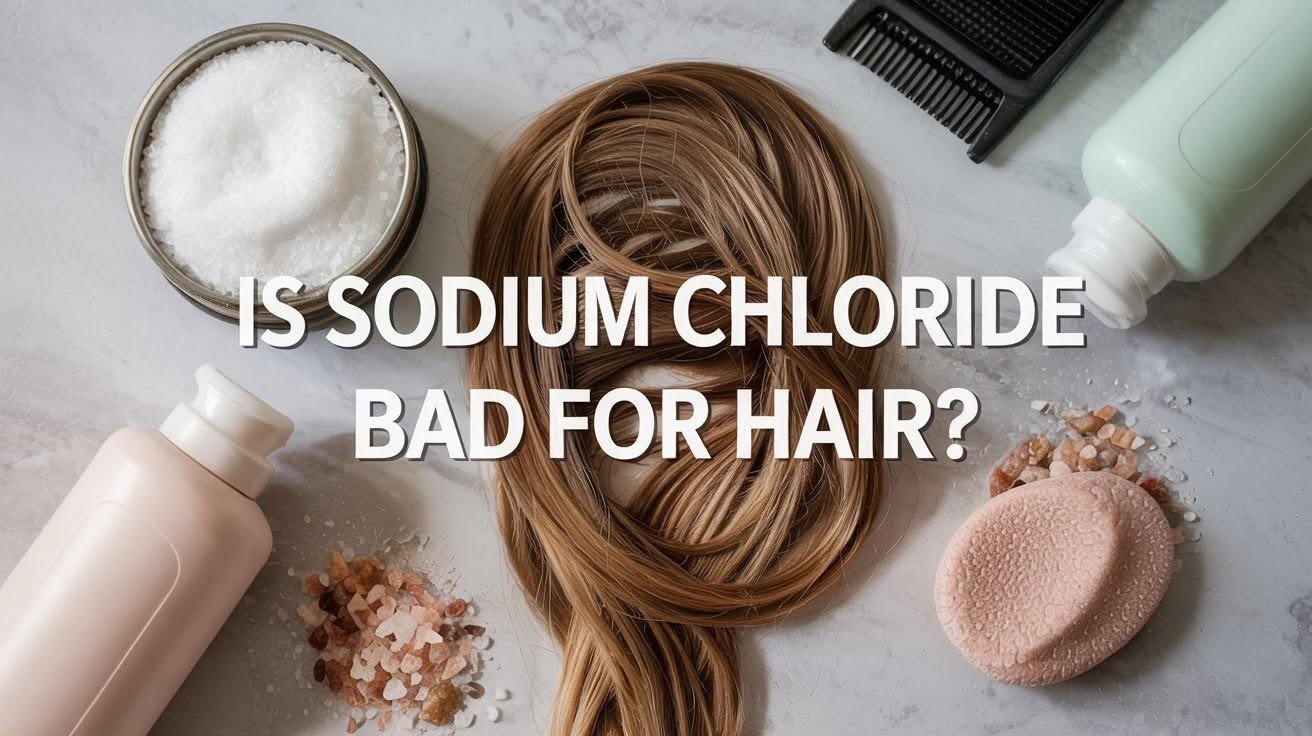
The salt in your shampoo may go unnoticed. However, sodium chloride, the same substance you use to season food, may be damaging your hair.
Too many people I’ve seen suffer from dry, frizzy hair without ever realizing it’s caused by their shampoo.
I’ll go over what sodium chloride does to your hair, why businesses use it, and who should stay away from it in this blog.
You’ll find how to identify it on labels and locate healthier substitutes that genuinely support the health of your hair.
Does hair suffer from sodium chloride? Together, let’s find out.
What Is Sodium Chloride and Why Is It in Shampoo?

Sodium chloride affects how your hair responds to daily care and styling products you trust.
Sodium chloride is regular table salt. Companies add it to shampoos as a thickening agent. It makes liquid formulas look richer and creamier, which many shoppers associate with quality.
The salt helps improve texture and gives shampoos a more luxurious feel. It’s cheap to produce, so you’ll find it in most drugstore hair products.
Manufacturers like using sodium chloride because it extends shelf life. It makes budget products feel more expensive without actually improving hair health. The problem is these benefits come at a cost to your scalp and strands.
While it helps the product’s appearance and consistency, it doesn’t do anything good for your actual hair. In fact, it often creates more problems than it solves.
How Sodium Chloride Affects Hair Health
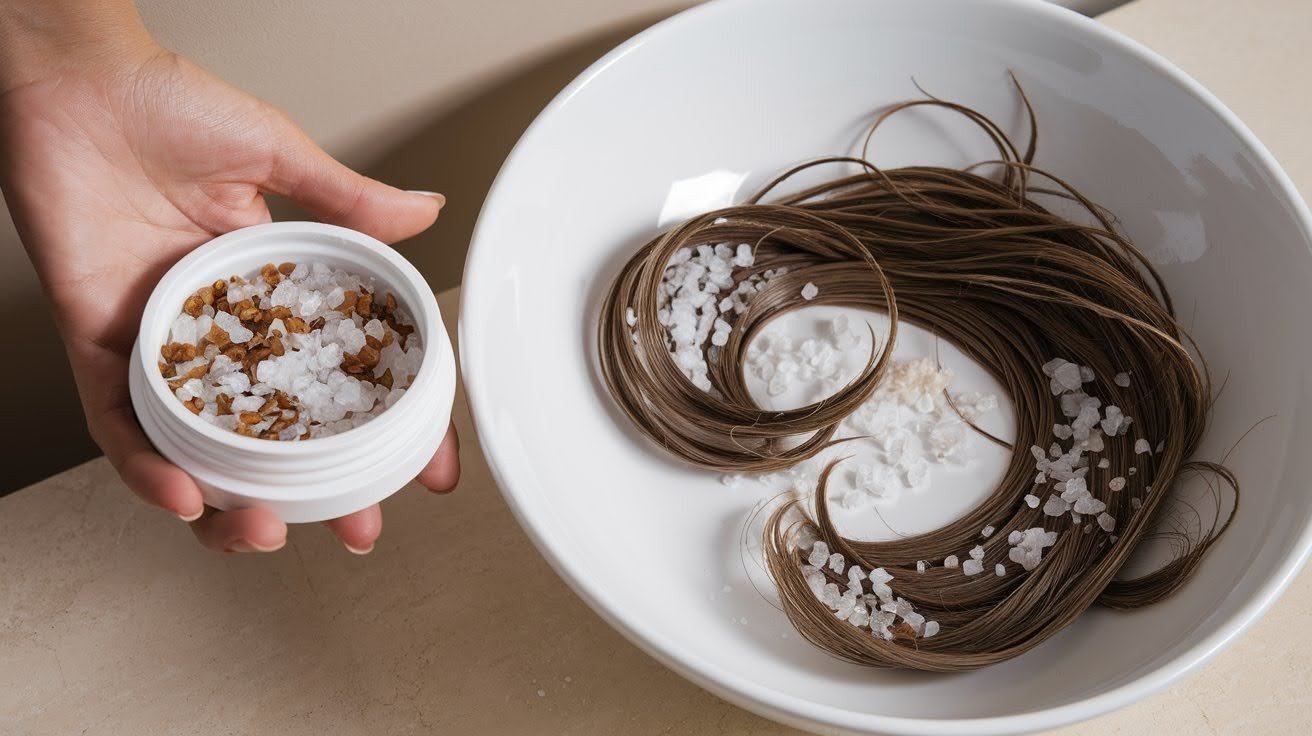
Sodium chloride creates multiple problems that damage your hair’s natural structure and appearance over time.
Strips Natural Oils
Salt strips away the protective sebum layer your scalp naturally produces. This leads to dryness, itchiness, and hair that feels rough and brittle. Your scalp needs these natural oils to stay balanced and healthy.
Weakens Hair Structure
The ingredient weakens your hair’s structure by disrupting keratin and protein- bonds. This makes strands fragile, frizzy, and more likely to break. You might notice more hair in your brush or shower drain.
Fades Hair Color
For colored hair, sodium chloride speeds up fading. It opens the hair cuticle, letting color molecules escape faster. Your salon results won’t last as long as they should.
Irritates the Scalp
Salt also irritates sensitive scalps. It can cause inflammation, flaking, and redness. People with existing scalp conditions often see their symptoms get worse.
Interferes with Salon Treatments
If you’ve had professional treatments like keratin smoothing or color services, sodium chloride works against them. It reduces how long your treatments last and cancels out the benefits you paid for.
Who Should Avoid Sodium Chloride in Shampoo
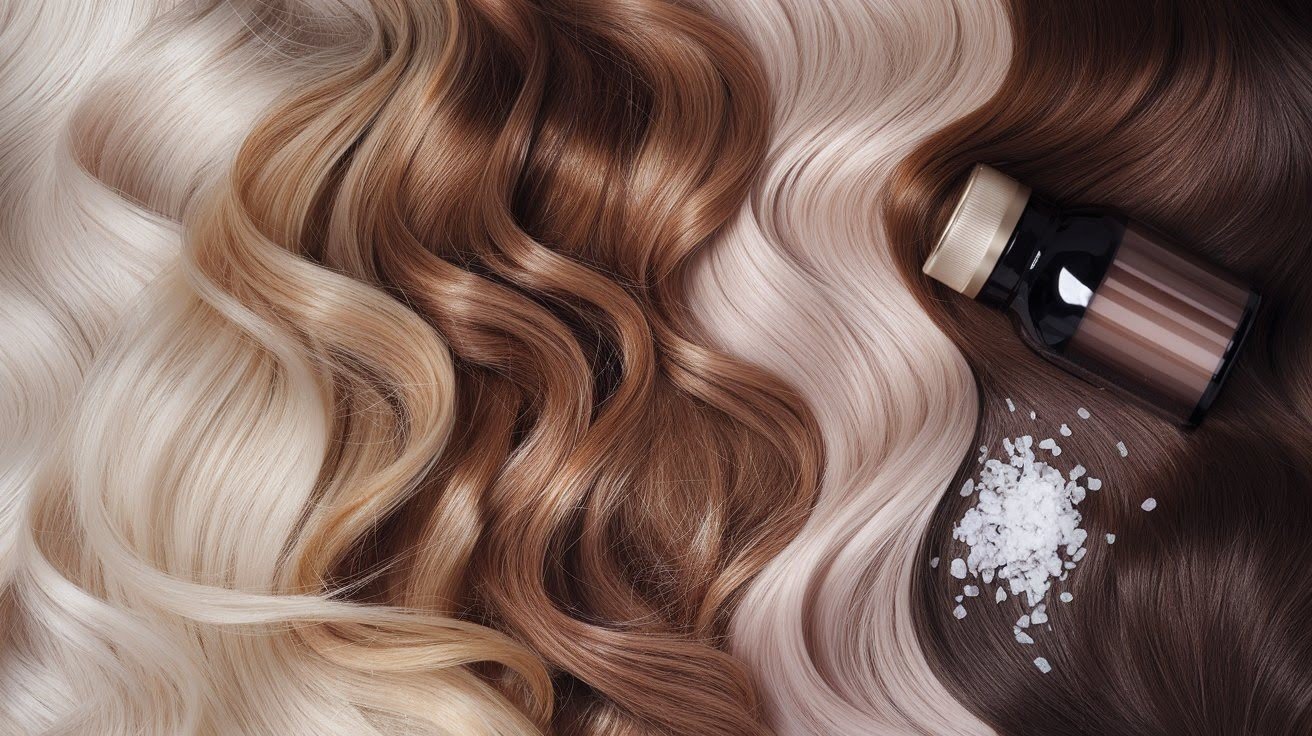
Certain hair types and conditions suffer more damage from salt-based formulas than others do.
If you color your hair, skip shampoos with sodium chloride. The salt makes your color fade faster and look dull within weeks instead of months.
People with keratin or smoothing treatments should avoid it completely. Salt breaks down the protective layer these treatments create. Your results will wear off much sooner than expected.
Those with dry, damaged, or curly hair will see worse frizz and dehydration. Curls lose their definition and bounce. Your hair becomes harder to manage and style.
Anyone with a sensitive scalp should read labels carefully. Sodium chloride triggers itchiness and irritation, especially if you already deal with scalp conditions like eczema or psoriasis.
The Science Behind Sodium Chloride and Hair Damage

Salt disrupts the cuticle layer that protects each strand. It lifts and roughens this outer surface, which increases how much moisture escapes. Your hair loses elasticity and develops more split ends.
The cuticle damage makes hair more porous. This means it absorbs water and chemicals differently, leading to unpredictable results when you color or treat your hair.
Repeated exposure to sodium chloride causes ongoing dryness. This stresses your hair follicles over time. While the salt itself doesn’t cause hair loss, the constant dryness and breakage can lead to thinner-looking hair.
The problem gets worse when sodium chloride appears alongside other harsh ingredients. Sulfates and parabens compound the damage, leaving your hair in worse shape than before.
Shampoo Ingredients That Work Better Than Sodium Chloride

Better alternatives exist that clean hair without causing damage or stripping natural moisture away.
Look for coconut-derived surfactants like sodium cocoyl isethionate. These gentle cleansers remove dirt without harsh effects. Plant-based ingredients and botanical extracts help maintain your hair’s moisture balance naturally.
Essential oils and natural butters provide nourishment your hair actually needs. They add shine and softness instead of creating dryness and damage.
When shopping, check for specific labels. “Sodium Chloride-Free” tells you exactly what you need to know. “Sulfate-Free” options are usually gentler overall.
“Color-Safe” or “Keratin-Safe” labels mean the formula protects your professional treatments. These products cost more but save you money by making salon services last longer.
How to Identify Sodium Chloride on a Shampoo Label
Sodium chloride appears on ingredient lists as “Sodium Chloride” or simply “Salt.” You’ll usually find it within the first 5 to 10 ingredients listed on the bottle.
The position matters. Ingredients appear in order of concentration. If sodium chloride shows up early in the list, the product contains a lot of it.
Watch for combinations of harsh ingredients. If you see sodium chloride plus SLS, parabens, or drying alcohols, put that bottle back on the shelf. These ingredients together cause even more damage.
Reading labels takes an extra minute, but it protects your hair from unnecessary damage. Make it a habit every time you shop for hair products.
Best Practices for Healthier Hair
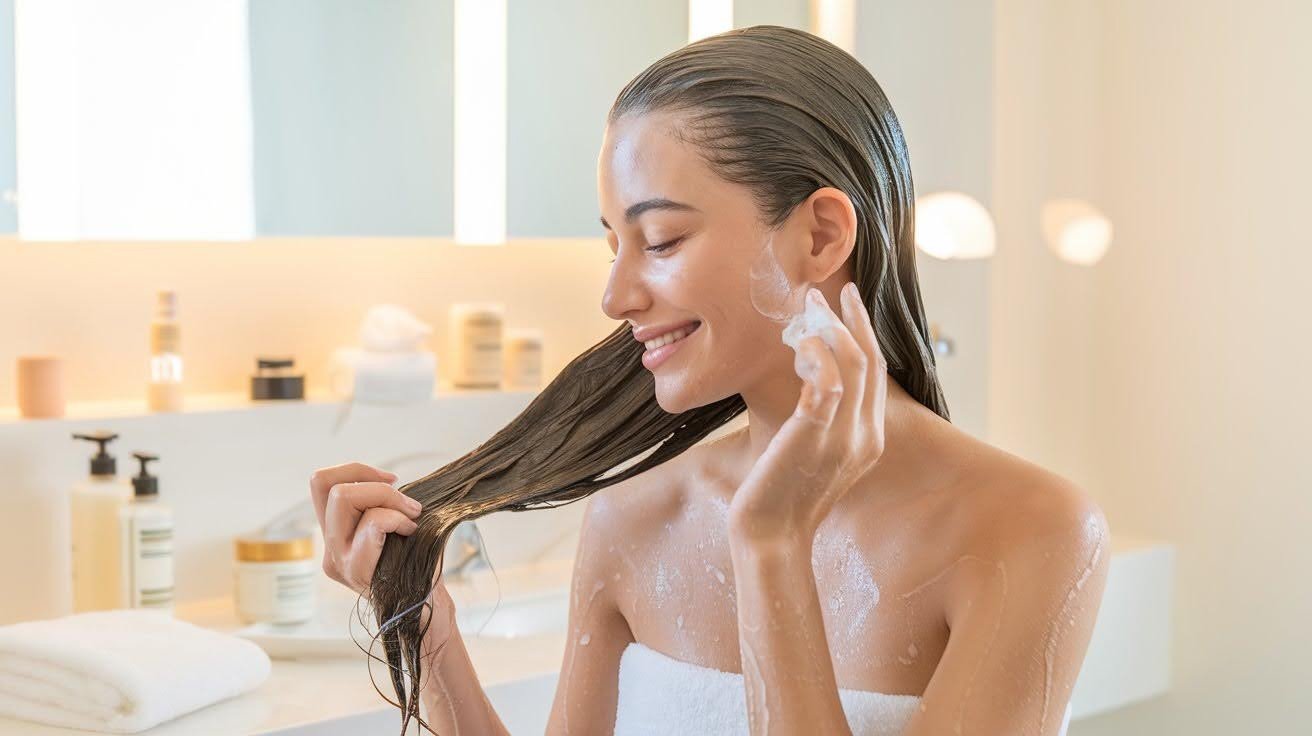
Simple changes to your routine can reverse damage and improve how your hair looks and feels.
Choose the Right Shampoo
Start by choosing the right shampoo. Pick sodium chloride-free formulas designed for your specific hair type and concerns. Your hair will respond better to products made for its needs.
Maintain Moisture Balance
Maintain moisture balance with hydrating conditioners and weekly masks. These restore the oil’s salt-based shampoos strip away. Your hair needs this extra care to stay soft and manageable.
Protect Color and Treatments
If you color or chemically treat your hair, use products your salon recommends. Sulfate-free and salt-free shampoos protect your investment and keep treatments working longer.
Consult Your Stylist
Talk to your stylist about the best options for your hair texture and any treatments you’ve had. They can recommend specific brands that won’t interfere with your salon results.
Sodium Chloride-Free Hair Care Options
Clean, salt-free brands offer real solutions for people tired of dealing with damaged, dry hair.
Salon-grade products often skip sodium chloride entirely. Brands like HiBAR create solid shampoo bars without salt or sulfates. These eco-friendly options work just as well as liquid shampoos.
Many private label salon products focus on plant-based ingredients. They maintain proper pH balance and support scalp health instead of compromising it.
These alternatives cost more upfront but save you money over time. Your hair stays healthier, your color lasts longer, and you need fewer repair treatments.
Final Verdict
Indeed, there are serious issues with sodium chloride. It damages the protective cuticle layer, dries out your hair, and speeds up color fading.
It’s not harmful or poisonous, but it’s undoubtedly bad for treated or healthy hair.
Two years ago, I made the switch to shampoos without salt and saw a significant improvement.
I no longer have to deal with the frizz I used to battle every morning, my hair feels softer, and my color lasts for weeks.
One of the best things I could have done for the health of my hair was to make this change.
See how your hair reacts after a month of using a shampoo without sodium chloride. Tell me about your experience by leaving a comment below!
Frequently Asked Questions
Does sodium chloride cause hair loss?
Sodium chloride doesn’t directly cause hair loss. However, it creates dryness and weakens hair strands, which leads to breakage. Over time, this breakage can make your hair look thinner.
Can I use regular shampoo after a keratin treatment?
No, avoid shampoos with sodium chloride after keratin treatments. The salt breaks down the keratin layer and makes your treatment fade much faster than it should.
Is sodium chloride the same as sea salt spray?
Yes, it’s the same basic ingredient. Sea salt sprays create texture but also dry out your hair. Use them sparingly and follow with hydrating products to minimize damage.
How long does it take to see results from salt-free shampoo?
Most people notice softer, less frizzy hair within two to three weeks. Color-treated hair shows improved vibrancy after about a month of consistent use.
Are all sulfate-free shampoos also sodium chloride-free?
Not always. Some sulfate-free formulas still contain sodium chloride as a thickener. Always check the full ingredient list to be sure you’re avoiding both.




